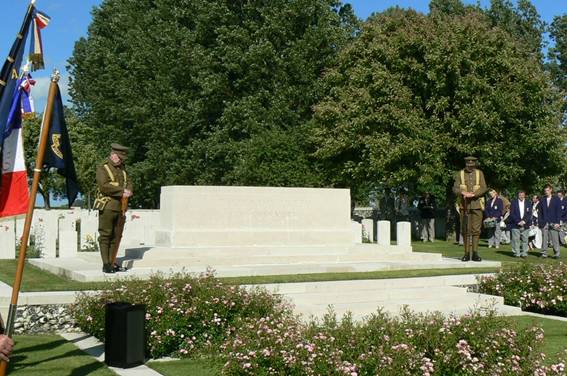
Early on the morning of June 28, while most people were still soundly asleep in their beds, small groups of people from across the south of England were setting off for the Channel ports, at the beginning of what, to some of them, has become an annual pilgrimage.
Where were they going? To a small French village in the Pas de Calais called Richebourg.
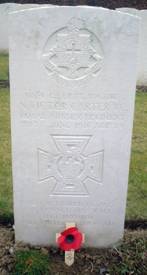
En route to Richebourg this year, our party travelled via the village of Laventie, near to which is the Royal Irish Rifles cemetery. Despite its name this small cemetery contains the graves of men from a diversity of regiments. Amongst them are those of just three men from the Boar’s Head action, including Eastbourne man Nelson Carter. Company Sergeant Major Nelson Victor Carter was one of the men of the 12th Battalion, the Royal Sussex Regiment, who fought and died in the Battle of the Boar’s Head. His grave is singularly distinguished from the others within the Royal Irish Rifles cemetery by the engraving on his headstone of the Victoria Cross, which he was awarded posthumously for his action in single-handedly taking a German machine gun position, turning the gun on the enemy, and holding the position whilst his comrades from the Southdowns battalions withdrew, when, towards the end of the battle, the British gains became untenable. Carter himself subsequently returned to the British lines, but went several times into no man’s land to bring back injured men. It was whilst doing this that he was shot in the chest, and died “almost immediately”. Our party placed a small cross of sacrifice at Carter’s grave in memory of his brave actions, before continuing our journey to Richebourg.
Just before 6 p.m. local time, the parties who had travelled from England met at the Richebourg St. Vaast cemetery, where the local villagers, the Mayors of Richebourg and Aubers, the Richebourg local band, and the standard bearers of Les Anciens Combattants, the local veterans associations, were already gathered. There followed a very moving, commemoration ceremony, in which we remembered the sacrifice made by those who laid down their lives, those who were wounded or taken prisoner, and those who survived the battle but for whom the memory of the events of that day would remain with them for the rest of their lives.

Among those attending from England were relatives of the dead and missing, and some of the soldiers who had survived the battle. Every major town in Sussex lost men on that day, with the towns of Chichester, Eastbourne, Hastings and Worthing suffering some of the greatest losses, and all of those towns were represented by relatives, with a total of thirteen attending from Eastbourne alone. The Glosters, who also played a significant part in the action, were also represented at the commemoration.
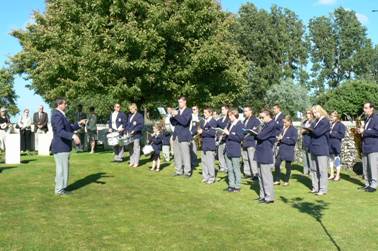
There are many sad personal tales relating to the battle, included among which, from Worthing alone, were the deaths of the two Blaker Brothers, Leonard, who is buried at Richebourg St. Vaast Post cemetery, and Frank, who is listed amongst the missing on the Loos Memorial. Also from Worthing, the Pannell Brothers, Alfred and Charles, 12th Battalion, and William, 13th Battalion, all amongst the missing. The fourth brother George, a Corporal in the Southdowns, was at home on leave at the time of the attack. We hope that relatives of both families will join us in future years.
Amongst the saddest of all the stories must be that of John Searle, one of five brothers from Worthing. Private Searle had enlisted in the 12th Battalion at the age of just fourteen and a half. After the battle, his mother appealed through the local paper for any soldier having knowledge of him to contact her, but no contact came. He had not yet reached his 16th birthday when he was listed missing presumed dead at the Battle of the Boar’s Head. He too is recorded amongst the missing on the tablets of the Loos Memorial.
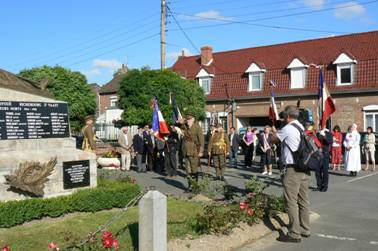
Following the commemoration the Mayor’s party, the band , and the standard bearers, with the Royal Sussex Living History Group, marched from the cemetery to the village War Memorial, where we laid a wreath in memory of our French comrades who also paid the ultimate price defending their homeland during the Great War, and also as a sign of respect for the people of Richebourg itself. The village was awarded the Croix de Guerre in recognition of the devastation it suffered during the war.
On the morning following the remembrance, we visited the battlefield with the majority of the relatives who had taken part in the commemoration. The course of the battle was explained, following which some of the group walked the battlefield to try to gain a better understanding of the challenges their ancestors had faced, whilst others chose to use the time in quiet personal reflection.
During the course of this year’s remembrance we were fortunate to have Richard Jones and his cameraman Paul from Meridian Tonight with us. We would like to thank them for the very moving piece that they compiled, and was broadcast on 30th June.
Later that day we visited the Loos Memorial to the missing, and there laid a wreath in memory of Pte Searle, and the other one hundred and ninety-one men of Lowther’s Lambs who fell at the Boar’s Head and have no known grave.
This year’s commemoration is the third to be held. Now an annual event, it takes place each year on the last Saturday in June, at 6 p.m. local time, at the Richebourg St. Vaast Post Military Cemetery, in the Rue des Charbonniers, Richebourg.
If you had a relative who served with one of the Southdowns (11th, 12th and 13th) battalions, the Royal Sussex Regiment, who took part in the Battle of the Boar’s Head, the Royal Sussex Living History group would very much like to hear from you.
Since the ninetieth anniversary we have remembered them.
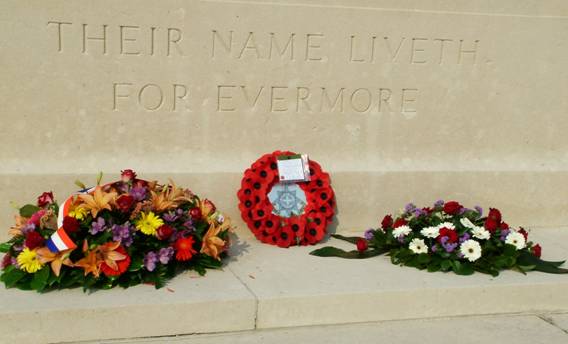
We will endeavour to continue to do so at Richebourg St. Vaast Post Military Cemetery
At 17.00hrs on the last Saturday in June each year until the 100th anniversary
The 100th Aniversary Commemoration will be held at 17.00hrs on 30th June 2016.
God willing we will be there.
The major Boar’s Head Cemeteries are:
Our thanks to Fred Dablemont for providing us with the excellent photographs.






